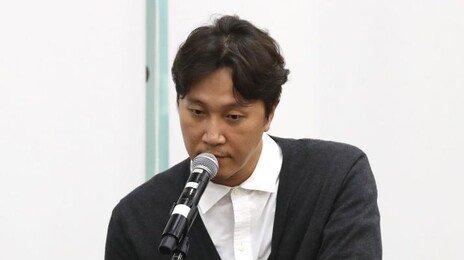공유하기
[뉴욕타임스로 논술을 잡아라!]The End Of the Rainbow
-
입력 2006년 4월 25일 03시 03분
글자크기 설정
DUBLIN - Here's something you probably didn't know: Ireland today is the richest country in the European Union after Luxembourg 1).
Yes, the country that for hundreds of years was best known for emigration, tragic poets, famines, civil wars and leprechauns * today has a per capita G.D.P. higher than that of Germany, France and Britain. How Ireland went from the sick man of Europe to the rich man in less than a generation is an amazing story. It tells you a lot about Europe today: all the innovation is happening on the periphery * by those countries embracing globalization in their own ways -- Ireland, Britain, Scandinavia and Eastern Europe -- while those following the French-German social model are suffering high unemployment and low growth.
Ireland's turnaround began in the late 1960's when the govern-ment made secondary education free, enabling a lot more working-class kids to get a high school or technical degree. As a result, when Ireland joined the E.U. in 1973, 3) it was able to draw on a much more educated work force.
By the mid-1980's, though, Ireland had reaped the initial benefits of E.U. membership - subsidies to build better infrastructure and a big market to sell into. But it still did not have enough competitive products to sell, because of years of protectionism * and fiscal mismanagement. The country was going broke, and most college grads were emigrating.
“We went on a borrowing, spending and taxing spree, and that nearly drove us under,” said Deputy Prime Minister Mary Harney. “It was because we nearly went under * that we got the courage to change.”
And change Ireland did. In a quite unusual development, the go-vernment, the main trade unions, farmers and industrialists came together and agreed on a program of fiscal austerity, slashing cor-porate taxes to 12.5 percent, far below the rest of Europe, moderating wages and prices, and aggressively courting foreign investment. In 1996, Ireland made college education basically free, creating an even more educated work force.
The results have been phenomenal *. Today, 9 out of 10 of the world's top pharmaceutical companies have operations here, as do 16 of the top 20 medical device companies and 7 out of the top 10 software designers. Last year, Ireland got more foreign direct investment from America than from China. And overall government tax receipts * are way up.
We set up * in Ireland in 1990,” Michael Dell, founder of Dell Computer 4), explained to me via e-mail. “What attracted us? A well-educated work force - and good universities close by. Also, Ireland has an industrial and tax policy which is consistently very supportive of businesses, independent of which political party is in power. I believe this is because there are enough people who remember the very bad times to de-politicize * economic development. Ireland also has very good transportation and logistics * and a good location -- easy to move products to major markets in Europe quickly.”
Finally, added Mr. Dell, “they're competitive, want to succeed, hungry * and know how to win. Our factory is in Limerick, but we also have several thousand sales and technical people outside of Dublin. The talent * in Ireland has proven to be a wonderful resource for us. Fun fact: We are Ireland's largest exporter.”
Intel 5) opened its first chip factory in Ireland in 1993. James Jarrett, an Intel vice president, said Intel was attracted by Ireland's large pool of young educated men and women, low corporate taxes and other incentives that saved Intel roughly a billion dollars over 10 years. National health care * didn't hurt, either. “We have 4,700 employees there now in four factories, and we are even doing some high-end * chip designing in Shannon with Irish engineers,” he said.
In 1990, Ireland's total work force was 1.1 million. This year it will hit two million, with no unemployment and 200,000 foreign workers (including 50,000 Chinese). Others are taking notes. Prime Minister Bertie Ahern said: “I've met the premier of China five times in the last two years.”
Ireland's advice is very simple: Make high school and college education free; make your corporate taxes low, simple and transparent; actively seek out global companies; open your economy to competition; speak English; keep your fiscal house in order; and build a consensus around the whole package with labor and management - then hang in there * , because there will be bumps in the road - and you, too, can become one of the richest countries in Europe.
“It wasn't a miracle, we didn't find gold,” said Mary Harney. “It was the right domestic policies and embracing globalization.”
■돋보기
아일랜드에는 무지개가 시작되거나 끝나는 지점에 레프리컨이라고 불리는 작은 요정이 나타나 황금 항아리를 숨겨놓고 돌아다닌다는 전설이 있습니다. 이 칼럼은 아일랜드가 경제발전이라는 황금 항아리를 어떻게 찾아냈는지에 관한 글입니다.
아일랜드는 이민 기근 내전과 이를 음울하게 묘사한 문학작품으로 알려진 나라였습니다. 1945년 여름 큰 비와 습한 날씨 때문에 감자 페스트가 번졌습니다. 주식인 감자의 흉작으로 120만 명이 굶어죽었습니다. 당시 세계 최고의 국력과 부를 누렸던 소위 영국은 무장한 군대를 앞세워 식민지 아일랜드에서 양식을 빼앗아 갔습니다. 아일랜드에서 이후 10년간 200만 명이 미국으로 이민을 떠났습니다. 미국 존 F 케네디 대통령은 이때 조국을 등진 아일랜드 이민의 4세입니다. 아일랜드는 1980년대 중반까지 국가파산 상태로 치달았습니다. 대학졸업자들도 줄을 지어 이민을 갔습니다.
이 칼럼은 재기불능으로 보이던 아일랜드가 어떻게 세계 4번째 유럽에서 두 번째 부자 나라가 되었는지를 설명하고 있습니다. 무상교육, 국제화, 영어 사용, 긴축재정, 노사화합 여기에 덧붙여 난관이 닥칠 때 이겨내는 정신이 바로 아일랜드가 주는 교훈이라고 말하고 있습니다.
아일랜드의 성공 사례가 우리나라에 주는 교훈에 관해 생각해 보기 바랍니다. 교육받은 인적자원과 경제성장의 관계에 관해 공부하고 글을 써보기 바랍니다. 한국의 경제성장도 뜨거운 교육열이 밑바탕이 되었다는 분석이 있습니다. 우리나라에서도 세계화와 개방에 반대하는 이익단체들이 있습니다. 이러한 단체들의 주장에는 어떤 문제가 있으며, 한국에서 세계화와 개방이 왜 필요한지에 관해 논술을 써보기 바랍니다.☞자세한 주해는 이지논술 사이트를 참조하세요.
황호택 논설위원
뉴욕타임스 >
-

임용한의 전쟁사
구독
-

기고
구독
-

오늘의 운세
구독
-
- 좋아요
- 0개
-
- 슬퍼요
- 0개
-
- 화나요
- 0개
![[뉴욕타임스로 논술을 잡아라]The Culture Of Nations](https://image.donga.com/donga_v1/images/img_default.png)



댓글 0